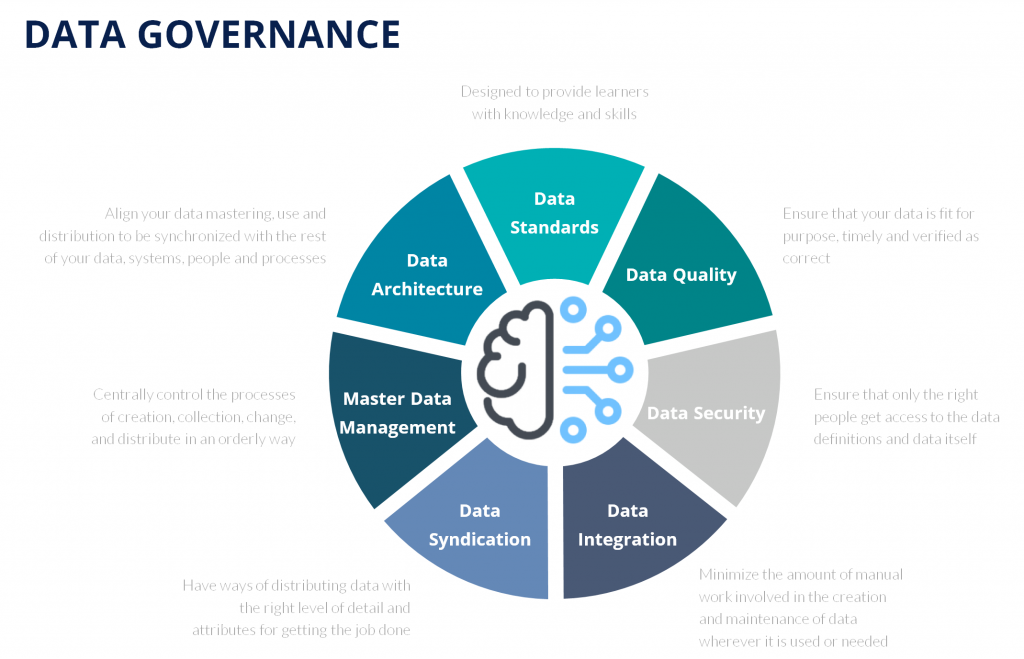Customer master data is a digital representation of the customer and should be viewed as an enterprise asset. As such, the management of customer data should be considered in exactly the same way as an organization would consider any other asset. It should be something to be secured and maintained.
An essential part of organizational asset management is understanding the accountabilities of various interest groups and stakeholders in the asset. The same has to be true of customer data.
This is where customer master data management is often a consideration and often it is part of a larger program of data management and data governance but does not necessarily have to be so.

Interest and agreement on ownership is sometimes something that has to be sought from various parties within the organization, particularly when the origination and management responsibilities are unclear or shared.
Prior to developing any customer master data management practices, there are a number of organization and process checkpoints that need to be proposed, verified, agreed and set.
The first task is identifying those that would be impacted by customer data. Typically for a manufacturer of goods, this is not a focus of attention for manufacturing however that depends on the nature of the goods manufacturing operation. For example, a contract manufacturer or a manufacturer of custom or bespoke articles may have a very close relationship between the manufacturing team and the customer. A cobbler, a jeweller, a banker, for example, all of these product and service providers may in fact have a close enough relationship with the actual customer that they are deemed direct stakeholders because they are directly impacted.
The second point of interest is the determination of the impact of good (or bad) customer master data on the day-to-day operations, tasks and activities of those impacted or interested in customer data.
This could range from the barista serving up a particular beverage at the local coffee shop and accidentally using dairy milk instead of a non-dairy alternative, all the way through to a doctor or physician attending to some patient ailment and requiring access to the unequivocal vital statistics of the patient. For each of these, there are questions about what data they require and how they get access to the necessary data. A Point of Sales system for the barista, a patient health administration system for the doctor perhaps.
Depending on the complexity of the organization and a number of other factors, the complexity of customer master data management relationships may be simple or very complex; along the way, you will want to consider the responsibilities and accountabilities of each interest group.
Part of the process of customer master data management scoping and adoption involves trying to determine the exact value and benefits that the business hopes to harvest from an improved customer master data management practice.
Improvements in business productivity are often held up as plausible reasons but others that might be considered are things like meeting compliance obligations, responsiveness to the needs of the customer, improved agility to adapt to an evolving market and the ability to scale, but there may be other more subtle reasons that should be factored in also. These are also goals that are tied to more specific OKRs that you might want to also consider. You will want to be clear about what the direct operational benefits are that you hope to achieve.
Another aspect that you will want to consider, is going to be around the question of who will fund the initiative and serve as the principal program sponsor.
If you’re a smaller business this may not be that much of an issue but if your organization is a juggernaut with many departments a sprawling data footprint and a lot of data exchange complexity then knowing who the final arbiter of critical decisions, will be very valuable in itself. So make sure you have a project sponsor.
Implementing one or more technologies to support your Customer Master Data Management initiative can help with the standardisation of the data collection and data evaluation and distribution and control processes.
Technology can also drive more rigour in the assignment of responsibility for the management of particular data systems and data elements, these could start with spreadsheets and process documents but quickly need to evolve to the use of more regimented specific-purpose solutions like the Pretectum CMDM.
Contact us today to learn more about how we can help.


